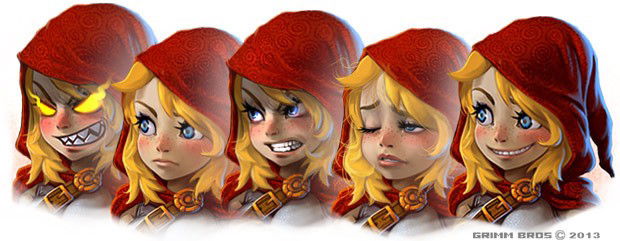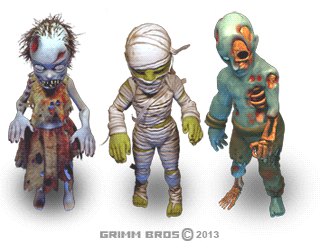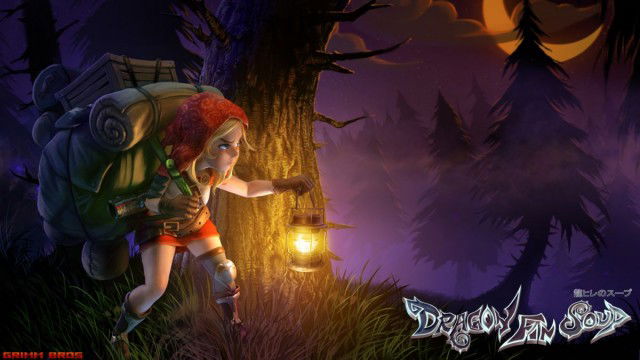Undercooked
The roguelike genre has been seeing a massive surge in popularity as of late, with powerhouse titles such as The Binding of Isaac and Crypt of the Necrodancer at the helm setting new standard of excellence. Unfortunately though, when the bar is raised, other entries in the genre have to work harder to be viewed positively; unfortunately, this means that games like Dragon Fin Soup get left behind.
Game Name: Dragon Fin Soup
Platform(s): PS3, PS Vita, PS4 (reviewed), PC
Publisher(s): Grimm Bros
Developer(s): Grimm Bros
Release Date: 11/3/15
Price: $19.99
Originating as a Kickstarter campaign in early 2014, Dragon Fin Soup promised a unique take on the genre, blending strategy RPG elements with the procedural generation and progression formula of rougelikes*. Theoretically speaking, it’s an interesting combination; mixing strategic turn-based combat and high-stakes dungeon-crawling; however, the combination of these elements make the game feel lacking.
Dragon Fin Soup’s core gameplay consists of traversing a large tiled board, with each attack and movement passing a turn. This system is a staple of the roguelike genre and is typically functional in its implementation, but due to seemingly random path-finding of both friendly and enemy units mixed with the high movement speed of the player character, correctly aligning one’s self to attack is more difficult than it should be; this goes double for speaking to NPCs, who not only move whenever you do, but also swap places with you if you’re adjacent to them. There is a turning mechanic in which the player can change the direction they’re facing, but it’s a bit obnoxious to have to use it when in most games the NPCs are stationary and the player can collide with them. Worse still, the player can only use the turn command on their turn (which is fair enough, as the game has a backstab mechanic), which can often cause the player to swing at thin air when they think that they had turned and are now facing their intended target. These issues can be resolved by taking the game slowly, but the speed of the game outside of combat (as well as in smaller encounters) is so quick that one can’t help but try to fight at that same pace.

Pacing issues aside, combat in general can be exhausting at times. For example, there are a number of worm enemies that appear in caves and deserts; these enemies cast a spell that immobilizes the player from several tiles away and then proceed to inflict damage from long-range while the player cannot move, forcing the player to use long-ranged attacks in return to defend themselves. Upon first glance, this seems par for the course for the genre: unique enemies that have their own particular patterns and ways around them; however, the scarcity of long-ranged ammunition means that in certain areas, ranged combat is simply not an option due to the threat of these worms. Even when the worms are defeated, the player is still liable to be immobile from the spell for a number of turns should they have done the deed quickly, forcing them to swing at empty space until they can move again.
Worms aside, enemies can disengage from combat at a moment’s notice, which can cause a frustratingly long chase should the enemy AI not choose to turn back so that it can be killed; ranged attacks would be useful in this situation, but again, that runs the risk of being completely defenseless against worms, not to mention that ranged attacks seem to be fairly inaccurate against moving enemies to begin with. Even allies can prove to be an issue, as they are not directly controlled by the player; this often results in unwanted combat situations as well as the eventual loss of any allies in question as they do not disengage from unfavorable fights when the player does.

In general, the game’s aesthetic and feel lend themselves better to a dungeon crawler more in the vein of Diablo III or Torchlight, where players are more free to explore their options at a comfortable pace rather than having everything come to a stop until the players turn comes around (which can be confusing when enemies and pets all have turns to take as well). Fortunately enough, the game has a story mode that is much more similar to those titles, where the player must complete quests and death sends them back to the beginning of the deepest floor of a dungeon the player has reached. This mode did nothing to alleviate aggravating deaths, but it at least made it so that the player’s progress was not all for nothing, which is a step in the right direction**. Unfortunately though, the story mode is lacking in-depth; there only seem to be a handful of quests, and they don’t tie into the overarching story.
As it were, the story is about Robin, a young gun for hire who has lost the memories of her past, but is plagued by nightmares of confronting and being killed by a mysterious cloaked man. As the story progresses, we find out that Robin has living relatives and is brought through a journey to remember her past. This is all well and good, but the game progresses this painfully inorganically; instead of getting significant pieces of the narrative in normal quests, the player is just assigned a handful of random tasks and then is given a quest that progresses the story once a number of them have been completed. This wouldn’t be terrible in and of itself; but due to the aforementioned lack of variety, the same quests get recycled constantly to such an extent that it’s not uncommon to have the exact same experience between each piece of story.

Graphically, Dragon Fin Soup does not impress. Though the 2d character art and splash screens are quite good and even beautiful at times, the 3d models do not live up to their counterparts. This may sound harsh, but the rate of animation and overall quality of the models seems more suited to a tablet game than a budget PC release. Beyond that, the UI can be a bit difficult to make out at times, which is made worse by clunky menu navigation which needs oddly specific commands for certain actions; not to mention that even though certain items can only be used within certain menus (equipment primarily), they still appear on menus in which they cannot be used when each category could have acted as a filter.

The isometric view of the game is also often an issue; overly dense and dark areas are in surplus, and it can be hard to tell which tiles are actually occupied by obstacles, enemies, and even quest objectives at times.
As for as audio goes, there is little to say, the music and sound effects alike are fairly generic high fantasy tracks, and contribute to the somewhat flimsy tablet game feel.
*A roguelike is a dungeon crawler which emphasizes permanent death and procedural generation of levels
**Though permanent death is a staple of roguelikes, Dragon Fin Soup‘s lack of predictable AI, occasionally ambiguous visuals, and turn-based gameplay make for infuriating and undeserved deaths.
Not as tasty as it sounds
Final Word
Though Dragon Fin Soup had a promising concept, the implementation can be rather shallow at times. Deaths often feel undeserved and the combat feels rigid and heartless more often than not. The game has a great deal of potential in theory, but at the moment, this soup is under-cooked.
Pros:
- Likable main character
- Beautiful 2d art
- decent humor
Cons:
- Clunky UI
- Poor AI
- Cluttered maps
- Bare-bones combat
- Repetitive story mode
- Unappealing models
-
Gameplay - 6.5/106.5/10
-
Graphics - 4/104/10
-
Sound - 5.5/105.5/10
-
Value - 4/104/10


